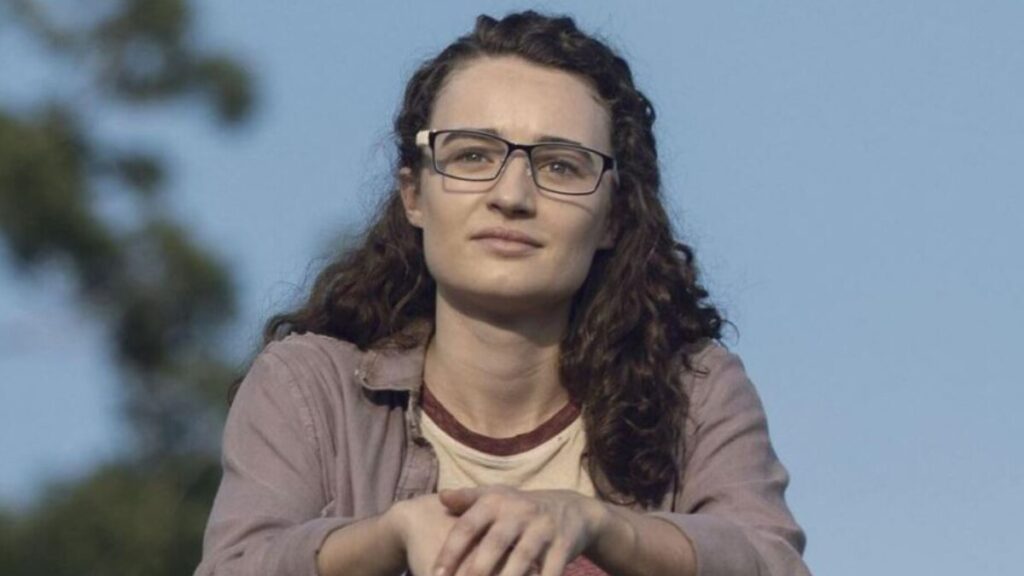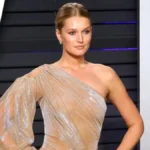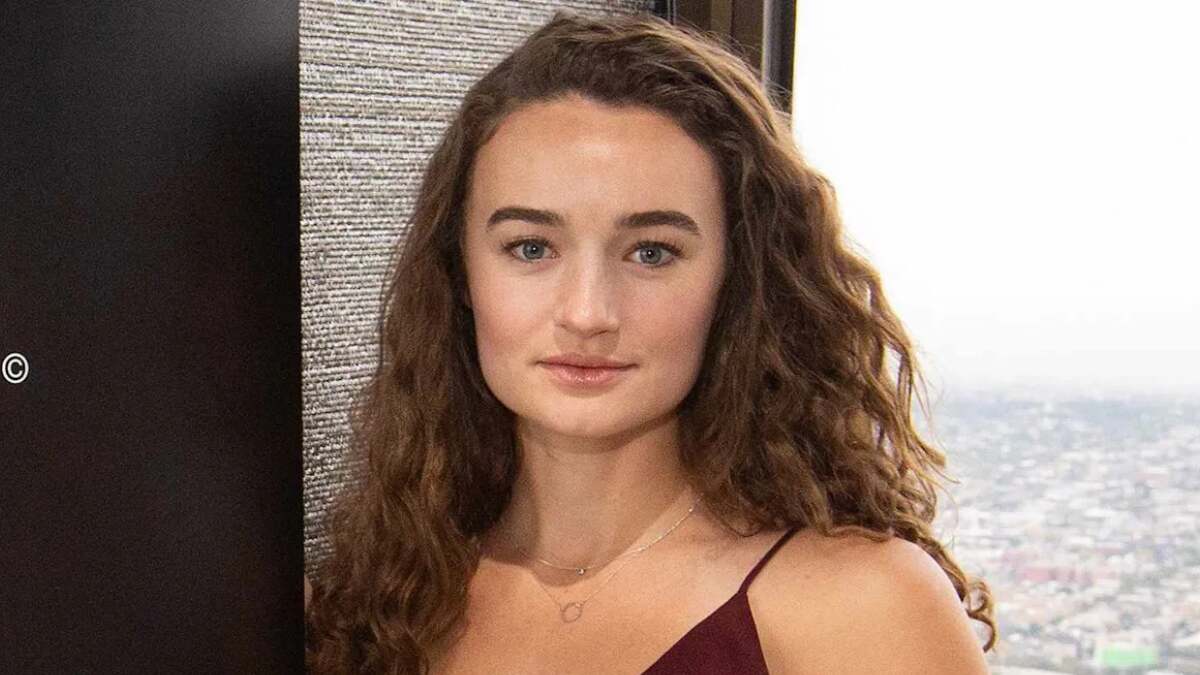“We don’t just watch stories—we carry them. And some actors make sure we never forget where we found them.”
Kelley Mack was never the loudest voice in the room, but her presence reverberated like a well-struck chord—quiet, resonant, unforgettable. For those who followed her career closely, or even encountered her just once on screen, there was something unmistakably intentional about her work. She didn’t just play characters—she inhabited them. And more than that, she seemed to reach into the emotional undercurrent of a scene and find something that felt entirely hers.
Now, in the months following her final screen appearance and the industry’s collective reckoning with her absence, we’re left not just with grief, but with gratitude. Gratitude for a body of work that told stories with nuance, complexity, and care. Gratitude for the creative fingerprints she left on projects both big and small. This article is not just a remembrance—it’s a celebration of what Kelley Mack left behind: a final film that resonates with aching clarity, a portfolio of deeply felt performances, and an intellectual legacy that deserves both attention and admiration.
Her story didn’t end with credits. It lives on in every frame she touched.
More Than a Screen Presence: Kelley Mack’s Cinematic Journey
Early Roles That Carved a Path
Long before Kelley Mack found mainstream recognition, she was already making deliberate choices that hinted at the kind of artist she was becoming. Her early work, often nestled in the folds of indie film and student-driven shorts, gravitated toward complex emotional spaces—narratives about isolation, vulnerability, and unspoken resilience. These weren’t flashy parts. They were raw, sometimes messy, and always intimate.
In short dramas like The Elephant Garden and Bleeding Hearts, Kelley showed an uncanny ability to convey emotional tension with just a glance or a pause. She didn’t chase visibility—she pursued truth. These early performances suggest a performer less interested in fame and more in the intricacies of human experience. Her characters often stood at the margins—quiet observers, women navigating identity, grief, or moral ambiguity—roles that would become thematic touchstones in her later work.
Even then, she wasn’t following a formula. She was already shaping one of her own.
Breakthrough Performances & Cultural Impact
Kelley Mack’s turn as Addy in The Walking Dead wasn’t just a line on her résumé—it was a moment that pulsed with emotional gravity. In a world crowded with chaos and carnage, her portrayal stood out for its quiet strength and subtle complexity. Addy wasn’t a typical post-apocalyptic fighter; she was layered, hesitant, human. Kelley infused her with a sense of lived-in fear and cautious hope that made audiences lean in closer.
It was this ability—to turn genre roles into deeply personal studies—that won Kelley a place in the hearts of fans. Social media lit up with praise for her restraint and nuance, with many calling her performance “a highlight of the Whisperer arc.” Critics noted how she brought unexpected tenderness to a brutal world, elevating scenes with a kind of unforced gravitas.
Her work didn’t just entertain—it lingered. In the timeline of the series, Addy was a brief chapter. But in the emotional arc of its audience, Kelley wrote something permanent.
Her Final Bow: Inside Kelley Mack’s Last Film
Behind the Scenes of Her Final Performance
On the set of Hollow Light, Kelley Mack’s final film, there was an unmistakable sense that something meaningful was unfolding—though no one yet realized just how final her scenes would become. Directed by indie darling Elise Tran and shot over six weeks in the misty, sun-dappled valleys of Northern California, the film was a quiet, metaphysical drama about memory, grief, and the spaces between.
Kelley played Mara, a woman returning to her childhood home after the death of her estranged mother—a role that called for restrained vulnerability and emotional excavation. Crew members recall how Kelley moved through the set with quiet focus, often sitting alone between takes, not out of distance, but in immersion. “She wasn’t just playing Mara,” cinematographer Devon Wu noted. “She was Mara. She carried the story in her body.”
Co-star Javier Luna shared that Kelley would bring handwritten journal entries to set, written in Mara’s voice, to help stay grounded in the character’s psyche. “There was a depth to her process that made you raise your own game,” he said.
No one knew it would be her swan song—but in retrospect, the emotional charge in every frame now feels prophetic. This wasn’t just a performance; it was a parting gift.
Posthumous Release & Audience Reception
When Hollow Light premiered at the Telluride Film Festival, the atmosphere was reverent—less a debut, more a memorial. Word had quietly spread that the film would mark Kelley Mack’s final screen performance, and what might’ve once been a modest indie release transformed into a deeply emotional event. The post-screening silence lingered, followed by a standing ovation not just for the film, but for the woman at its core.
Critics praised Kelley’s performance with a renewed sensitivity. IndieWire called her work “devastatingly intimate,” while Variety highlighted how she “turned every breath into subtext.” Fans took to social media with tributes, compiling favorite scenes, behind-the-scenes photos, and personal reflections. One fan wrote:
“I watched Hollow Light knowing it was her last, and it hit me like a whisper that won’t leave. She didn’t just act—she left pieces of herself behind.”
The film’s digital release was accompanied by a short dedication from director Elise Tran, simply reading: “For Kelley, who gave everything to the frame.” And the world, in turn, watched with open hearts.
The Craft Behind the Camera: Kelley’s Lesser-Known Production Work
While Kelley Mack was most visible in front of the camera, her creative fingerprints were just as present behind it. A self-described “story obsessive,” she took on roles as a writer, producer, and creative consultant on several short-form projects—many of which never reached wide audiences but carried her distinct signature: emotional precision, atmospheric tension, and characters wrestling with silence.
In 2018, she co-wrote and co-produced the short film Disquiet, a psychological two-hander exploring dream logic and trauma, which screened at a handful of underground festivals. Director Colin Sheehan described her as “the backbone of the project,” adding, “Kelley had an incredible sense for pacing—she could spot emotional clutter a mile away and knew exactly how to cut through it.”
She also mentored younger filmmakers through nonprofit collectives like CineUnity, where she led workshops on character-driven storytelling. It wasn’t unusual for her to stay hours after an event, giving feedback one-on-one. She was generous with her process, but never performative about it.
Kelley’s production work wasn’t a pivot—it was a parallel passion. She wasn’t waiting for better roles to be written; she was writing them. She understood that storytelling doesn’t begin with a line delivery—it begins with intention, with shape, with voice.
A Glimpse into Kelley’s Artistic Philosophy
Kelley Mack didn’t chase the spotlight—she chased something quieter, deeper. She often spoke about storytelling not as performance, but as connection. In interviews and social posts, her words carried a clear thread: acting was never about being seen—it was about seeing others more clearly.
“I think the most powerful thing we can do as artists is make people feel less alone, even for five minutes.” — Instagram Q&A, 2021
She was known to take her time with characters, sometimes journaling in their voices or building personal playlists. For Kelley, process mattered as much as product.
“If I don’t believe the silence between two characters, I won’t believe the words either.” — Panel interview, Storyline LA, 2020
When asked about fame or career goals, she often pivoted toward questions of meaning:
“I’m not trying to be iconic. I just want to leave behind a body of work that made someone stop scrolling, stop flipping channels, and think, ‘Wait… that felt real.’” — Twitter post, 2019
Her legacy isn’t measured only in screen time or accolades. It’s in these moments of truth—the ones she created, the ones she lived by. Through her voice, we hear the clearest version of her intent: to reflect the world gently back to itself, one story at a time.
The Quiet Power of Influence: How Kelley Mack Changed the Industry
Kelley Mack wasn’t a headline-dominating name—but her impact rippled through the indie film space and into the margins of mainstream storytelling in quiet, intentional ways. She was part of a new wave of actors who blurred the lines between traditional genres, particularly in the indie-horror and psychological drama arenas, where emotional nuance increasingly took center stage.
In Hollow Light and earlier projects like Disquiet, Kelley demonstrated that vulnerability could be a central force in suspenseful narratives—redefining strength as stillness, not spectacle. This shift, subtle as it was, helped pave the way for similar performances in films like The Wind, She Dies Tomorrow, and Resurrection, where women weren’t scream queens or victims—they were emotional anchors.
Director Elise Tran noted,
“Kelley didn’t play fear the way most actors do. She made you feel like you were inside it. That shifted the tone of how we built female leads in my later work.”
Emerging talent has echoed this sentiment. Rising actress Nora Venn, whose recent short Static Bloom draws from minimalist horror, credits Kelley as a blueprint:
“Watching Kelley in even her smallest roles permitted me to be subtle. She made space for quiet women on screen.”
She also actively mentored writers through workshops and film collectives, advocating for character-first scripts that gave marginalized voices real interior lives. Without fanfare, Kelley Mack helped recalibrate what it meant to be impactful in film—not through volume, but through depth. Her influence was never about being seen. It was about what others could see because of her.
How Kelley Mack Stands Beside Her Peers
In remembering Kelley Mack, it’s impossible not to think of others whose lives and careers were similarly cut short—artists like Anton Yelchin and Brittany Murphy, whose creative energy burned brightly in too brief a time. While each followed a unique path, they shared an undeniable ability to leave a lasting impression through emotionally charged performances and an instinct for roles that challenged the status quo.
Anton Yelchin, like Kelley, was drawn to characters who didn’t fit cleanly into archetypes—quiet outsiders, reluctant heroes, emotionally layered souls navigating fractured realities. His work in Like Crazy and Green Room echoed the same internal tension Kelley brought to Hollow Light—where vulnerability was strength, and silence spoke volumes.
Brittany Murphy, known for her range from Girl, Interrupted to Uptown Girls, brought a manic fragility to the screen that—though stylistically different from Kelley’s restraint—also revealed deep emotional intelligence. Both actresses had a gift for injecting humanity into genre spaces, refusing to let their characters be reduced to types.
More than fame or box office draw, what links them all is their artistic clarity. They didn’t just take roles—they transformed them. They brought dignity to the overlooked and weight to the understated. Kelley Mack, like those before her, left behind more than credits. She left a creative echo that continues to shape how actors—especially women—craft emotional space in genre and indie cinema.
Where Her Work Lives On: Platforms, Archives & Tributes
In the digital age, legacies can live on in full resolution—and Kelley Mack’s work is no exception. For those discovering her for the first time, or returning to her films with a heavier heart, much of her artistry remains accessible, preserved in pixels and shared memories.
Her most recognizable role, Addy in The Walking Dead, is available on Netflix and AMC+, while her final film, Hollow Light, can be streamed via MUBI and Apple TV+, often accompanied by bonus features that include a tribute reel and cast commentary. Several of her indie shorts—including Disquiet and Bleeding Hearts—have found homes on Vimeo and Short of the Week, often posted by collaborators who knew her best.

YouTube now hosts a growing archive of fan-created compilations, scene breakdowns, and tribute videos—many of them lovingly edited montages paired with music and voiceovers that speak directly to the emotional impact of her work.
There are also curated memorial threads on Reddit and Letterboxd lists titled “The Kelley Mack Collection” that guide new audiences through her evolving style and understated brilliance.
To re-watch her work now is to participate in something living. Her characters still breathe, grieve, and hope. They are reminders not just of a talent lost, but of the power stories have to outlast their tellers.
A Lasting Intellectual Footprint
Kelley Mack’s legacy isn’t confined to scenes or scripts—it lingers in the questions her work dared to ask. Across her roles and creative projects, she consistently returned to themes of emotional interiority, quiet resistance, and the human need to be seen without spectacle. She didn’t simply tell stories—she stripped them down, asking audiences to sit with discomfort, to listen between the lines, to find the truth in subtle shifts and silences.
Her characters rarely shouted. They endured. And in doing so, Kelley helped shift the narrative of what strength looks like on screen—especially for women. She resisted the industry’s pull toward bigger, louder roles in favor of those that explored emotional complexity, moral ambiguity, and the blurred line between trauma and transformation. In both performance and production, she advocated for slow cinema, for writing that didn’t rush resolution, and for empathy as artistic currency.
“Stillness isn’t the absence of drama. Sometimes it’s where the drama is hiding.” — Kelley Mack (journal excerpt shared by collaborator Elise Tran)
Her intellectual legacy is one of intentionality—a quiet challenge to the pace, tropes, and formulas of contemporary storytelling. Long after the credits roll, Kelley Mack asks us to stay a moment longer, to feel instead of just react.
In a culture that often rewards immediacy, she made the case for depth. And in that, she left something that refuses to fade.
More Than Memory — A Creative Force That Endures
Kelley Mack may no longer be here to tell her stories, but her stories continue to tell us something. They whisper of nuance, of grace under pressure, of characters who speak volumes without saying much at all. And maybe that’s the real legacy—not just the films she made, but the emotional language she helped define.
To revisit her work now is to witness an artist who gave fully, quietly, and without pretense. It’s an invitation to slow down, to listen more closely, and to appreciate the honesty of understated storytelling.
So watch her films. Share them. Talk about the moments that moved you, the silences that stayed with you. Because as long as we keep doing that, Kelley Mack’s voice—soft, strong, and deeply human—will never truly fade.
Mohit Wagh is the co-founder of The Graval with over 10 years of experience in SEO and content strategy. He specializes in crafting data-driven, authoritative content that blends cultural insight with digital growth.















4 thoughts on “What Kelley Mack Left Behind: Final Film, Production Credits & Intellectual Legacy”